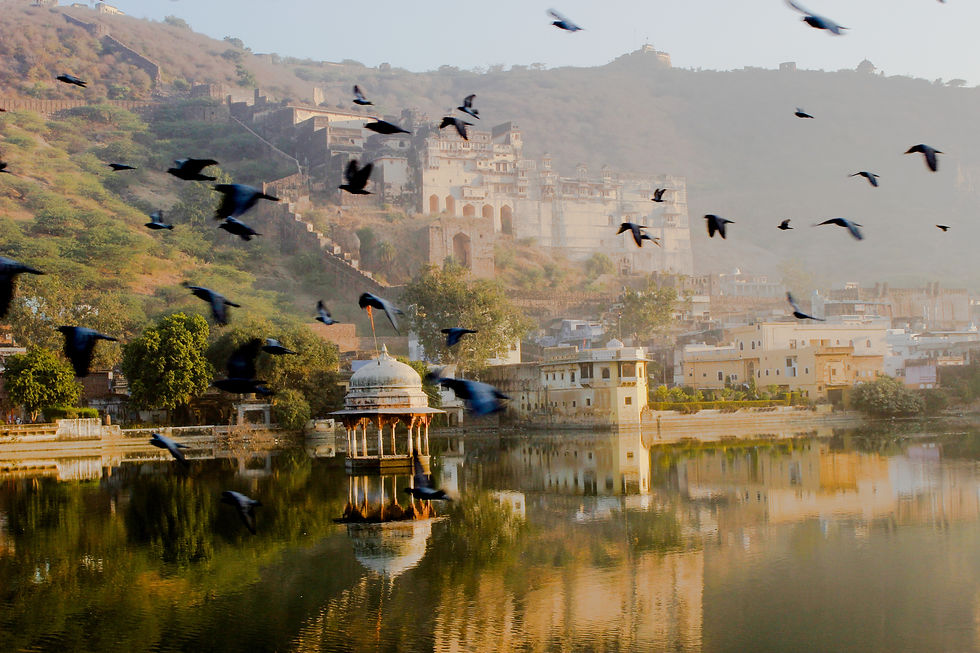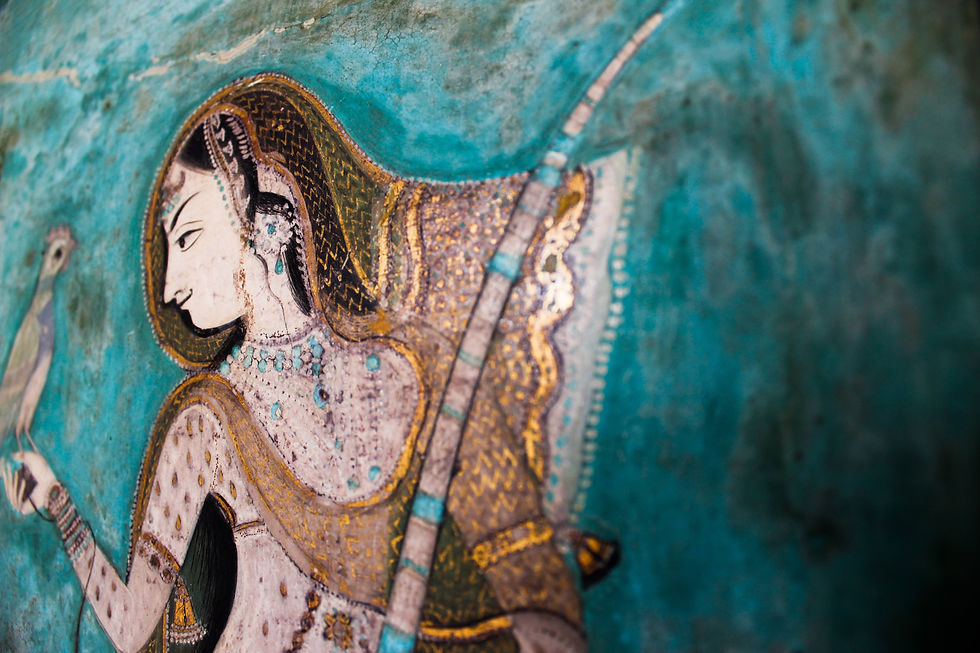A Picturesque Town of Rajasthan - Bundi
- Yudhivyas
- Dec 26, 2016
- 3 min read

"The coup d'oeil of the castellated palace of Bundi, from whichever side you approach it, is the most striking in India." - Lieutenant Colonel James Tod, (1782-1835), the British Political Agent and author of the authoritative Annals and Antiquities of Rajasthan

The Messenger - Queen's Pigeon - An eminent Painting styple of Bundi School
About Taragarh Fort :-
The Taragarh Fort crowns the crest of a steep hill overlooking the town, while the Garh Palace spills picturesquely down the hillside. This palace is Bundi's – and Rajasthan's – jewel.
The state of Bundi was founded in 1341 by Rao Deva of the "fire-born" Hada Chauhan Rajput clan, and the massive, square Taragarh Fort dates to his reign. Work on the palace began in the 16th century, and it was added to by successive rulers over the next 200 years, at different levels on the hillside. Unlike most other palaces in Rajasthan, there is very little Mughal influence in its architecture. The Garh Palace represents a rare example of the pure Rajput style, with curved roofs topping pavilions and kiosks, a profusion of temple columns and ornamental brackets, and typically Rajput motifs such as elephants and lotus flowers. Unusually, the palace is not built of the sandstone favored by most other Rajput Kingdoms, but of a hard, green-tinged serpentine stone, quarried locally. This stone, unlike sandstone, does not lend itself to fine carving. Instead, Garh Palace was embellished by superb paintings.
About Bundi School Painting
Bundi Paintings, important school of the Rajasthani style of Indian miniature painting that lasted from the 17th to the end of the 19th century in the princely state of Bundi and its neighboring principality of Kotah (both in the present state of Rajasthan). The earliest examples (c. 1625) show Rajasthani features, particularly in the depiction of men and women, but Mughal influence is exceptionally strong. In richness and brilliance Bundi painting has an affinity also with the painting of the Deccan, an area with which the rulers of Bundi and Kotah were often in contact.
The Bundi school is characterized by a fondness for lush vegetation, dramatic night skies, a distinctive way of depicting water by light swirls against a dark background, and vivid movement. The school reached its peak during the first half of the 18th century but continued to flourish into the 19th century and had a brilliant phase at Kotah during the reign of Rām Singh II (1828–66). These vigorous paintings depict royal tiger hunts in the thick and hilly jungle of the region and various aspects of the life of the king.
The Bundi Paintings begun under Rao Chhatar Sal(1631-1659 AD), who was made governor of Delhi by Shah Jahan, The Bundi Artist have their own standards of feminine beauty. A typical Bundi-Kotah miniature has graceful women with round faces, receding fore-heads and shins, Strong noses, full cheeks, lotus petal eyes, sharp eyebrows and well formed bodies. The figures are often placed in the background of plants and evergreen forest, along with elephants, lions , tigers and wild Boars. The Bahgwad Purana Paintings belongs to this periods. This form of paintings developed further during the long reign of Raja Ummed Singh (1749-1771).and gave rise to class of Indian paintings called “RAAGMALA And BARMASA” paintings. These paintings depict the moods an sentiments of man and women, The twelve seasons, and thirty six Raagas and Raginis, linked to the season, Times of the day, and the mood of the moment. The artitian also integrated romance and mythology in these paintings. These paintings depict love, separation and union in a most beautiful form. Under Bishen singh(1771-182 AD) , hunting and wild animals become favourit subject. These paintings came under the western influence during the reign of Ram Singh (1828-1866)
(I have taken all the contents from my search on internet. I am very thankful to those all where from I took the written matter)

















































Comments